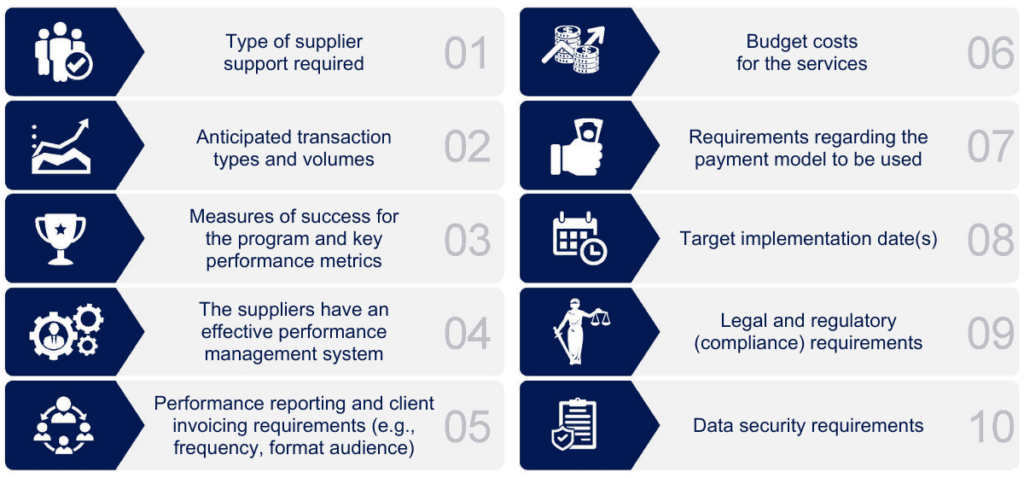
May 7, 2024
Contact center outsourcing can be particularly daunting if you’re doing it for the first time or looking to reshape an existing outsourced landscape. In both cases, the essence of success lies in making a savvy choice. This article guides you through the essentials, balancing rich insights with crisp, actionable information.
Identifying Your Core Requirements
Think about how satisfied you would be after receiving the house of your dreams from the hands of your builder, whose only direction in building the project was, “I want a big house with a pool.” Probably not very satisfied, right? The house will most certainly be big and have a pool, but it likely won’t match the image you had in your head.
You may have wanted an open floor plan and a contemporary style, but you might get a traditional house. Like any construction project, identifying and building your core requirements requires you to think hard about what you want your outsourcing relationships to achieve.
Start by asking the big questions: Are you chasing cost efficiency or a boost in quality, moving a function that’s not a core competency to an expert third party or updating your capabilities to match the latest technology? This initial step, critical yet often overlooked, sets the direction for your entire selection process.
Best-performing organizations rarely leverage their supplier contracts to drive performance. They set expectations from the beginning, and a robust governance process is implemented and followed to avoid tapping into preventive clauses. There’s a strong correlation between these steps and the effort that organizations put into building the requirements for their suppliers at the beginning of the process.

Course
Learn proven techniques for managing all aspects of contact center supplier relationships.
RFP: Effective Selection Mechanism
Document your requirements with the same thoroughness and precision as those critical for internal processes driving customer success. Apply the same level of detail when preparing forms for your contact center’s quality monitoring program.
When you go to market with a request for proposal (RFP), the more complete and accurate information you include, the better the supplier’s proposed solutions and pricing will match what you’re looking for. Think of this as the architectural drawings and all the decorator choices for your new house.
A common mistake organizations make is communicating only contractual requirements. However, non-contractual requirements are equally relevant, as they help you better match supplier capabilities with your needs, and suppliers will be more informed in their responses.
For example, you likely have contractual requirements for roles and responsibilities in your workforce management process. However, potential suppliers must also understand your historical volumes, handle times and occupancy to size and price your work.
Here’s an overview of what organizations usually include in both the RFP and the statement of work (SOW):

Some examples of quality requirements you still want in an RFP but that aren’t included in the SOW are:
- Quality forms: Although this information may change, it offers a helpful preview of the criteria the provider will face in future assessments.
- Calibration frequency: It’s part of a process that might change. However, the language on the contract will be transparent about the provider having to follow that process.
- Feedback process: Feedback might change in the future. You want providers to be bound to adhere to the process, whatever its shape or form.
Process, Process and Process
Your request for proposal (RFP) is more than a mere formality; it’s a strategic tool, a beacon that guides potential partners toward your precise needs. It’s also a phase where you start collecting a lot of information from potential suppliers and sharing many details with them. Therefore, a structured approach is desirable and mandatory for success.
A successful RFP will have five main sections:
- Informational content aimed at outlining the RFP response guidelines and the supplier selection process. Having a well-defined process will save everyone from receiving endless inquiries from candidates.
- Non-contractual requirements should include call flows, detailed support processes, e.g., quality, and communications architecture. Some candidates might realize they’re not competitive enough just by going through these and narrowing down the list.
- Master service agreement (MSA) template, including payment terms, dispute resolution, and termination provisions, among other critical contractual requirements.
- SOW template with contractual business requirements, technology requirements, pricing information and a glossary of terms.
- Supplier capability questions, which will help you understand the supplier’s capability in a range of areas such as business overview, leadership and planning, internal processes, historical performance and people. Ultimately, you want to ensure that whatever you’re outsourcing to them is a core piece of their business.

Related
Developing a Strategic Vendor Management Framework
Narrowing Down Your Candidates the Smart Way
As responses flood in, your discerning eye is key. The best way to approach this phase is to look beyond the surface. Review their performance data by reviewing their candidate’s history of managing similar programs. Remember, this is not the stock market: A proven track record can predict future performance.
As all the suppliers’ responses start to reveal their true selves, you must have an effective evaluation criterion to measure and rank each response. A criterion is key for ensuring the actual (and perceived) integrity of the selection process.
The document doesn’t have to be fancy; a spreadsheet will do if it lists all the requirements, scoring criteria and weights for each area. Above everything else, this is where all the work you did at the beginning starts to pay off. COPC recommends several best practices for this phase; here are a couple:
- Do your best to evaluate pricing separately from the rest of the responses. Many organizations make the mistake of filtering out suppliers too early in the process, only by pricing criteria, but they forget this is negotiable. At this stage, you’re still focusing on understanding the best match of supplier capabilities / your needs.
- As you establish quantifiable mechanisms to score suppliers, always note which components or areas matter most. Assign higher weights to develop an effective and good-scoring set of metrics.
- Consider any critical flaws that will automatically exclude a supplier from moving forward in the process. An example would be a supplier unable to support outbound capabilities when one of your programs is sales-focused. Label this as non-negotiable.
- References are a great way to understand if a supplier can deliver what it claims. As you collect them, leverage social networks such as LinkedIn to find out who you know in common with the supplier’s salespeople. The references should be able to provide unbiased feedback from their experience with the supplier.
Site Assessments: The Big Investment
After you’ve shortlisted the candidates for potential visits, it’s time to make sure that the money you’ve set aside for travel yields a worthwhile return on investment. When your evaluation committee arrives at the different sites, they will face agendas the suppliers have set up.
Perhaps socialization plans for lunch and dinner, and many generalizations about their capabilities. At this point, you need to take back control and ensure that every penny spent on visiting the site complements what you already know of this supplier.
Before the Assessment
- Time is money. Build a detailed schedule for the visit with all the activities.
- Focus on value-added activities that will likely provide insights into the BPO’s way of doing things. We’ve seen success from organizations that exclude social events or activities aimed at “getting to know” the people who work at the site from their schedules. They achieve the same goal but do it organically by meeting with individuals to discuss performance.
- Don’t stop at the management level. Make sure you’re scheduling time with frontline and support staff. Doing so will increase your chances of revealing how much of what the organization reports on the high-level assessment is accurate and get a first-hand glimpse of the site’s culture and morale.
During the Assessment
- Avoid socializing as much as possible. Achieve this by maximizing the evaluators’ time in those value-added activities scheduled in advance.
- Avoid data-empty and opinion-based claims. When a manager asserts to have achieved any level of performance, ask for the data backing that up. Don’t be afraid to challenge them if that data is unavailable or shows the contrary.
- Be flexible. We know how much effort you put into building a down-to-the-minute schedule. However, it would help if you took time when it makes sense. We’ve seen that this is particularly relevant when meeting with agents and team leads. Agents tend to shut down initially, but once they open up, they become a treasure trove of insights into how the BPO operates.
After the Assessment
REMEMBER: The purpose of an RFP site visit & assessment is not only to find out what is incompatible with your requirements but also to seek out and find the good things that the evaluation criterion didn’t reveal until this stage.
The Delicate Dance of Negotiation
With your shortlist in hand, the negotiation phase begins. This stage is more than striking a deal; it’s about forging a partnership. While it’s essential to understand your needs clearly, be open to suggestions and innovative solutions if they help the supplier accommodate pricing requirements. Remember that a successful negotiation culminates in a partnership that benefits both parties, paving the way for long-term collaboration.
COPC recommends that negotiations happen with a firm structure behind them and that conversations occur effectively and controlled. Here are a couple of components that should always exist:
- Have a process for responding to supplier inquiries on contract-related matters in a timely fashion. This final stage is vital for suppliers, so respect their eagerness to finish.
- Be prepared to draft, revise and finalize the required contracts and supporting documents. If vendor managers are leading this, ensure they have enough capacity to prioritize these tasks and set expectations for those departments that facilitate them, like legal and procurement.
- Obtain all required approvals. Nothing screams “unprepared” more than a process that needs to backtrack because someone decided that the company wasn’t ready to move forward with contracting. Ensure you bring everyone in from the beginning and keep them updated. Doing so will help you fly through the final stages of the process.
Finding the right contact center outsourcing partner is strategic and fraught with complexities and opportunities. By adhering to these best practices, maintaining a structured approach and keeping an eye on the minutiae and the big picture, you are well on your way to forming a partnership that will meet your current needs and propel you towards future success.

